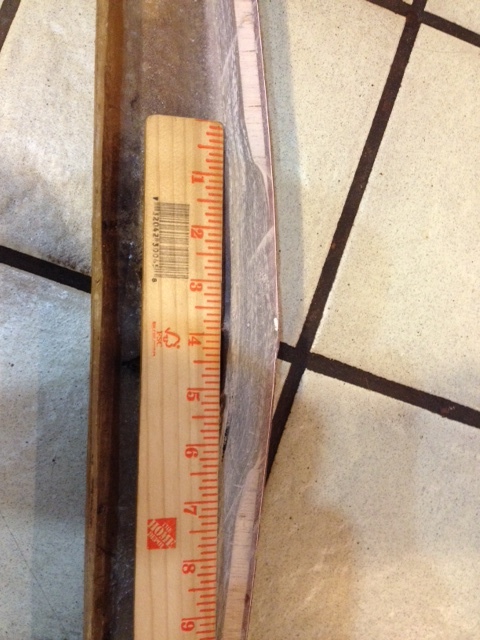I believe most if not all Freedom hulls were laminated around an end-grain balsa core. Does anyone know if there are any areas of non-cored, solid glass for additional strength, e.g. around the keel? I’m parochially interested in the Freedom 25 hull.
I dont know specifically about the freedom 25 though believe the core is not throughout the hull/deck.
For example the cabin sides and lower portions of the near the keel Freedom 28 and side decks near the flange joints are solid.
Some here have dug out a lot of core so know their boats well.
I cut up a F25 this year and can tell you with certainty that the deck and hull are cored. From in front of the keel all the way to the stern, the centerline is solid, including the keel trunk. Around the deck/hull joints there is also a solid layup. There are other strategic points (particularly in the cockpit) that are solid but overall the majority of the deck, hull and stern, are cored. I am sure all US built Freedom 25’s have a cored hull and deck, don’t know about the UK built hulls. The picture shows a stringer that came from right behind the keel trunk. It shows the solid layup in the cener and the end grain balsa core on either side.
happy sailing
Jim D

What is the approximate width of the solid core section in the photo? (Or thickness, just something for scale).
Assuming the bigger brown piece is a bulkhead supporting the cabin sole, it looks like the hull section is upside down relative to how it would have been in the boat. If so, it looks like the balsa core, which looks white in comparison to the more grayish glass, is much closer to the outside of the hull than the inside. If I’m interpreting this right, there’s ~4x greater thickness of glass on the interior side than on the exterior side.
A. According to information with my f33 the hull is cored to the waterline but the bottom is solid . I have also heard ht can’t confirm that the areas Where through hulls or seAcocks pass through are solid More heavily laminated. I think I heard this about newer boats which have cored hulls to the centerline which is also solid. For sure most of the deck and top sides are cored as I have changed or rebedded many fittings and added stuff like flue pipes FoF my fireplace etc and found thick coring. TPI did seem to use very substantially thick skin laminates on both sides of the core. One thing that I found disappointing was the failure to seal any core where fittings were instAlled . When I removed my sternlight to replace it with a led one I was dismayed to find a approx. 1-1/2 inch hole through the stern with exposed core . Fortunately , they bedded the light well And the core was dry!
The transom of my 1987 F 30 was solid glass.
This is what I found on the F25 that was cut up; The solid part in the picture is about 6" wide. The outer shell is pretty much the same thickness throughout the entire hull. For strength reasons, the inner shell below the water line is thicker and tapers off the farther you move away from the center line. Above the waterline the inner shell is slightly thicker than outer shell bunt not by much. Around the thru-hulls below the waterline the hull is not cored.
happy sailing
Jim D

Our UK built F35 (moulded in the Isle of Man) is balsa cored to within 40cm of the centre line, from just aft of the mainmast step to the transom. This was visible when I had the hull epoxied, and they scraped off the gelcoat from the waterline downward. I presume the core runs up to the gunwhale / hull - deck join. The only through-hull seacock I have removed had solid stuff filling the core at that point.
The insulation makes the hull quiet when at anchor, and reduces condensation, too.
On my US built F-33 the balsa goes a bit past the turn of the bilge and solid after that. The original thru hulls appear to have solid material built up around them and some are below the balsa anyway. One added by a previous own I removed and they hadn’t sealed the balsa but it wasn’t wet. I cut it back and epoxy filled and replaced the thru hull.